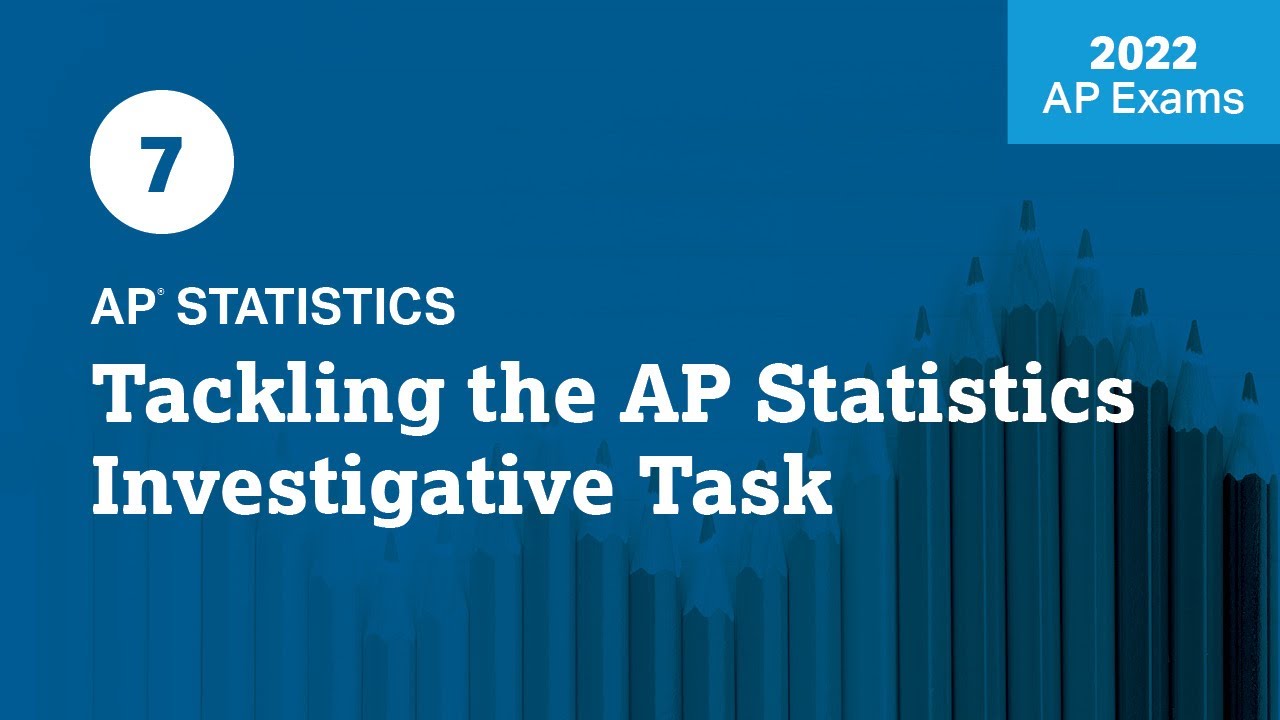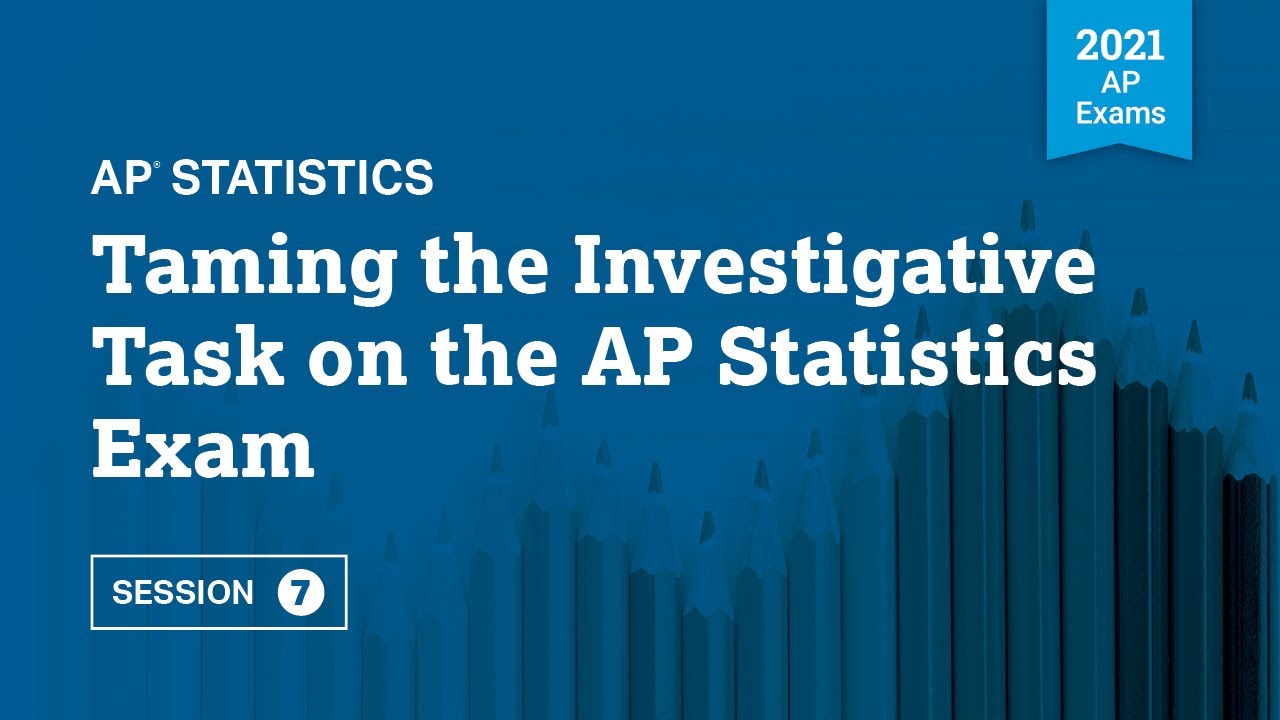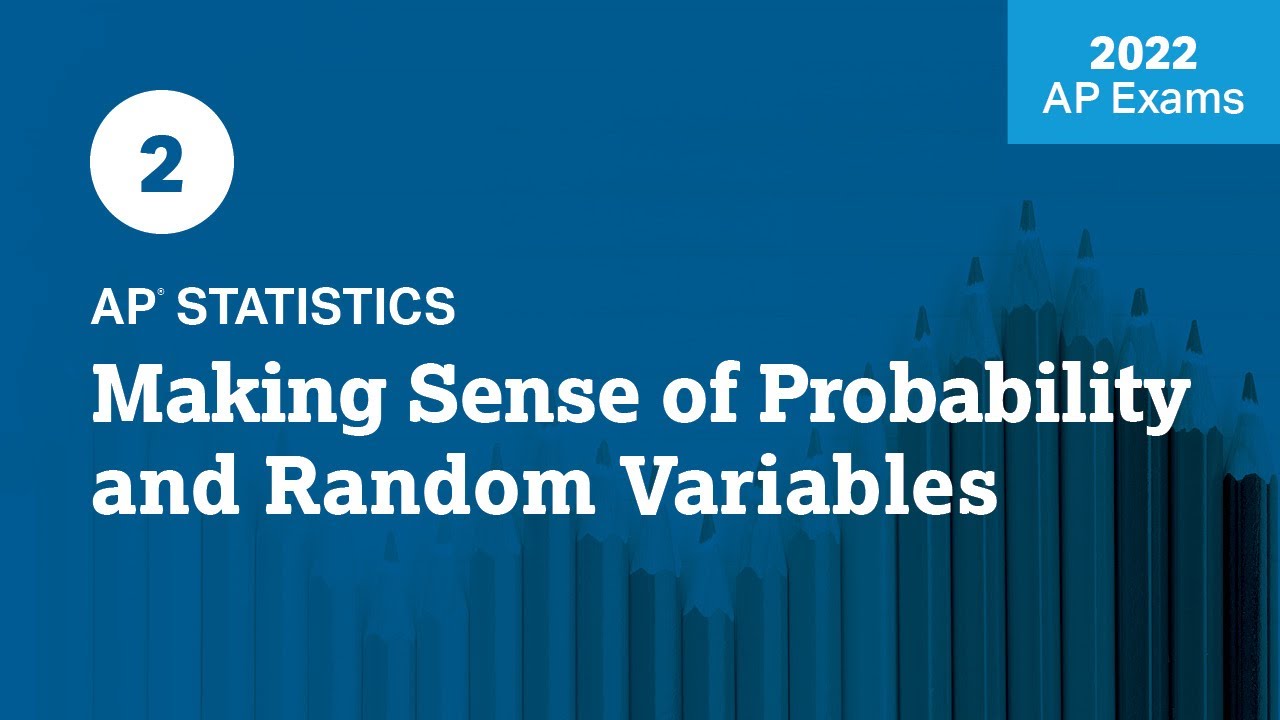2021 Live Review 4 | AP Statistics | Understanding Inference for Quantitative Data
TLDRIn this AP Statistics review session, Mr. Starnes focuses on inference for quantitative data, including means and slopes. He discusses confidence intervals, type 1 and type 2 errors, and the rationale for using t-distributions. Students are guided through multiple-choice and free-response questions, emphasizing the importance of active reading and the correct use of calculators. The session aims to clarify challenging concepts, share test-taking strategies, and build confidence in statistical inference skills.
Takeaways
- 📚 The session focused on inference for quantitative data, specifically inference for means and slopes, following Mr. Wilcox's introduction to inference for categorical data.
- 🔗 The materials, including handouts and formula sheets, are available at a provided URL for students to access and use during the session.
- 💡 The importance of using a graphing calculator, such as the TI-84, was emphasized, and students are encouraged to practice along with the session for familiarity with the tool they plan to use for the AP exam.
- 📊 The session addressed feedback from previous sessions, including questions about the formula sheet used in the AP exam and the use of calculators for statistical analysis.
- 📝 Mr. Starnes provided a detailed explanation of how to interpret a confidence interval and the meaning of the confidence level, clarifying common misconceptions.
- 🧐 The session included a review of type 1 and type 2 errors in the context of null and alternative hypotheses, helping students to understand the implications of these errors in statistical inference.
- 📉 The use of box plots on a calculator was demonstrated to assess the normality and presence of outliers in the data, which is crucial for meeting the assumptions of a t-test.
- ✅ The correct answer choices for multiple-choice questions were discussed, providing insights into common pitfalls and the correct reasoning for selecting the right option.
- 📈 The process of constructing a confidence interval for the slope in a linear regression analysis was covered, including interpreting computer output and applying the correct formula.
- 🤓 The session concluded with a free-response question walkthrough, illustrating the step-by-step process of conducting a significance test, from stating hypotheses to drawing conclusions based on p-values.
- 👍 The session aimed to build students' confidence in performing inference for quantitative data and emphasized the importance of following a structured process for statistical analysis.
Q & A
What is the main topic of the AP Daily Live Review session led by Mr. Starnes?
-The main topic of the session is inference for quantitative data, focusing on inference for means and slopes.
What resource does Mr. Starnes mention for the session materials and why is it important?
-Mr. Starnes mentions the tinyurl.com link for session materials, which includes the handout for the session and formula sheets. It is important as it provides the necessary resources for understanding and practicing the concepts discussed during the session.
What is the significance of the graphing calculator in this session?
-The graphing calculator, specifically the TI-84 used by Mr. Starnes, is significant as it is an essential tool for students to practice and understand the statistical concepts being taught, such as constructing confidence intervals and performing significance tests.
How does Mr. Starnes plan to address feedback from the previous session?
-Mr. Starnes plans to address feedback by incorporating more information about using calculators in session five, discussing what needs to be included in a free response answer in detail, and answering specific questions from students during the session.
What is the purpose of the multiple-choice questions discussed in the session?
-The purpose of the multiple-choice questions is to highlight traditionally challenging content and to engage students in active learning by having them respond to questions in real-time.
What is the correct interpretation of a 95% confidence interval according to the session?
-A 95% confidence interval means that if the data production process (in this case, random sampling) were repeated many times, about 95% of all such confidence intervals would capture the true population parameter.
What is a Type 2 error in the context of the medical doctor diagnosing arthritis?
-A Type 2 error in this context is failing to diagnose arthritis in a patient who actually has arthritis, which means not prescribing the treatment that the patient needs.
Why is the t-interval the appropriate method for constructing a confidence interval when estimating a population mean from a sample?
-The t-interval is appropriate when estimating a population mean from a sample because it accounts for the fact that the population standard deviation is unknown, which is often the case in real-world scenarios.
What is the difference between a z-interval and a t-interval when performing inference about a population mean?
-A z-interval is used when the population standard deviation is known or when the sample size is large enough (usually n ≥ 30) to rely on the Central Limit Theorem. A t-interval is used when the population standard deviation is unknown and the sample size is small, providing a more accurate estimate due to its wider interval based on the t-distribution.
What is the significance of the computer output in the context of constructing a confidence interval for the slope in a linear regression analysis?
-The computer output provides essential statistics such as the slope of the regression line, the standard error of the slope, and the critical t-value, which are necessary for constructing a confidence interval for the slope using the generic confidence interval formula.
How does Mr. Starnes suggest students approach the calculation part of a significance test on the AP exam?
-Mr. Starnes suggests using technology, such as a graphing calculator, to perform the calculations for a significance test on the AP exam due to time constraints and to ensure accuracy.
What is the four-step process Mr. Starnes outlines for performing a significance test in the AP Statistics exam?
-The four-step process includes: 1) Stating the hypotheses and defining parameters, 2) Identifying the inference procedure and checking conditions for its use, 3) Performing calculations to find the test statistic and p-value, and 4) Drawing a conclusion based on the p-value and the stated significance level.
Outlines
📚 Introduction to AP Statistics Daily Live Review
Mr. Starnes welcomes students back to the AP Daily Live Review session, focusing on the logic of inference for quantitative data, including means and slopes. He mentions that materials, including a handout and formula sheets, are available via a provided URL. The session will involve the use of a graphing calculator, specifically the TI-84, and encourages students to participate actively. Feedback from previous sessions is addressed, including questions about the formula sheet and calculator skills, and an upcoming session on free response answers is highlighted. The session aims to simplify challenging content, share strategies for AP exam success, and build students' confidence.
🔍 Understanding Confidence Intervals and Their Meaning
The session delves into the interpretation of a 95% confidence interval for the mean number of hours of sleep among a sample of high school students. Students are encouraged to answer a multiple-choice question about the meaning of the confidence interval. The correct answer is explained, emphasizing that a confidence interval in repeated sampling would capture the true population mean 95% of the time. The majority of students select the correct answer, demonstrating an understanding of interpreting the confidence level rather than the interval itself.
🤔 Differentiating Between Type 1 and Type 2 Errors in Hypothesis Testing
Mr. Starnes presents a scenario involving a medical doctor diagnosing arthritis and relates it to type 1 and type 2 errors in hypothesis testing. Students are asked to identify which option represents a type 2 error. The correct answer is explained, clarifying that a type 2 error occurs when the null hypothesis is not rejected despite the alternative hypothesis being true. A high percentage of students answer correctly, indicating a good grasp of the concept.
🌿 Estimating Population Mean Surface Area with a Confidence Interval
The session moves on to a botanist's study of maple leaves, where the goal is to estimate the population mean surface area using a one-sample confidence interval. Students are asked to choose the appropriate method for constructing the interval. The correct answer is identified as using a t-interval due to the unknown population standard deviation, and the explanation highlights the conditions under which a t-interval is appropriate.
📈 Constructing a Confidence Interval for the Slope in Regression Analysis
The focus shifts to constructing a 95% confidence interval for the slope of a least squares regression line, using computer output from a study predicting brain weight from body weight in non-human mammals. Students are guided to identify the correct expression for the interval from the output. The solution involves using the generic confidence interval formula with the slope, its standard error, and the critical t-value from the calculator.
🧐 Analyzing the Effectiveness of a Cholesterol-Reducing Drug
A free-response question is presented involving a study on the effectiveness of a cholesterol-lowering drug compared to exercise and diet alone. The data from two groups of middle-aged males is given, and students are to perform a significance test at a 0.01 significance level. The process includes stating hypotheses, identifying the inference procedure, checking conditions, performing calculations, and drawing a conclusion based on the p-value. The conclusion is that the data do not provide convincing evidence of the drug's effectiveness beyond exercise and diet.
🛠️ Recap and Strategies for AP Exam Success in Statistics
The session concludes with a recap of the key points covered, including interpreting confidence levels, describing type 1 and type 2 errors, using t-distributions for inference about means, and reading computer output from regression analysis. Strategies for AP exam success are highlighted, such as active reading, knowing the formula sheet, and using technology wisely. The session aims to build confidence in inference for quantitative data and encourages students to provide feedback for future sessions.
🔑 Final Thoughts and Preview of Upcoming Sessions
Mr. Starnes wraps up the session with final thoughts, emphasizing the importance of following the inference process for confidence intervals and significance tests. He previews the next session, which will focus on tools for test success, including an in-depth look at the calculator. He also encourages students to provide feedback and reminds them to join for the next session, which will explore rubrics for free response success.
Mindmap
Keywords
💡Inference
💡Confidence Interval
💡Type 1 and Type 2 Errors
💡Null Hypothesis (H0)
💡Alternative Hypothesis (Ha)
💡Significance Level (α)
💡p-value
💡Linear Regression
💡Slope
💡Free Response Question
💡Random Sampling
💡Graphing Calculator
Highlights
Introduction to the logic of inference for quantitative data, focusing on inference for means and slopes.
Materials for the session, including handouts and formula sheets, are available at a provided URL.
The importance of using a graphing calculator, specifically the TI-84, for the session exercises.
Request for feedback on the session via a Google form to improve future sessions.
Addressing previous session feedback, including questions about the formula sheet and calculator usage.
Explanation of the meaning of a 95% confidence interval in the context of a study on student sleep hours.
Distinguishing between interpreting a confidence interval and interpreting the confidence level.
Correct answer analysis for a question on the meaning of a confidence interval, highlighting common misconceptions.
Introduction to the concept of Type 2 error in the context of a medical diagnostic test for arthritis.
Explanation of how to identify a Type 2 error in a hypothesis testing scenario.
Discussion on the appropriate method for constructing a confidence interval for estimating the population mean surface area of maple leaves.
Clarification on why a t-interval is used for constructing confidence intervals when the population standard deviation is unknown.
Analysis of a linear regression output to construct a 95% confidence interval for the slope.
Explanation of how to use the computer output and the generic formula for a confidence interval to find the slope interval.
Presentation of a free response question involving a significance test on the effectiveness of a cholesterol drug.
Detailed walkthrough of the four-step process for conducting a significance test, including stating hypotheses, identifying the procedure, performing calculations, and drawing conclusions.
Recap of the session, emphasizing the importance of understanding the process of inference for quantitative data.
Reminder of the upcoming session focusing on important tools for the AP exam, including a closer look at the calculator.
Transcripts
Browse More Related Video

2022 Live Review 5 | AP Statistics | Vital Resources for the AP Exam: Inference Flowchart

5 | MCQ | Practice Sessions | AP Statistics

2022 Live Review 7 | AP Statistics | Tackling the AP Statistics Investigative Task

2021 Live Review 7 | AP Statistics | Taming the Investigative Task on the AP Statistics Exam

2022 Live Review 2 | AP Statistics | Making Sense of Probability & Random Variables

2022 Live Review 1 | AP Statistics | Making Sense of Collecting and Exploring Data
5.0 / 5 (0 votes)
Thanks for rating: